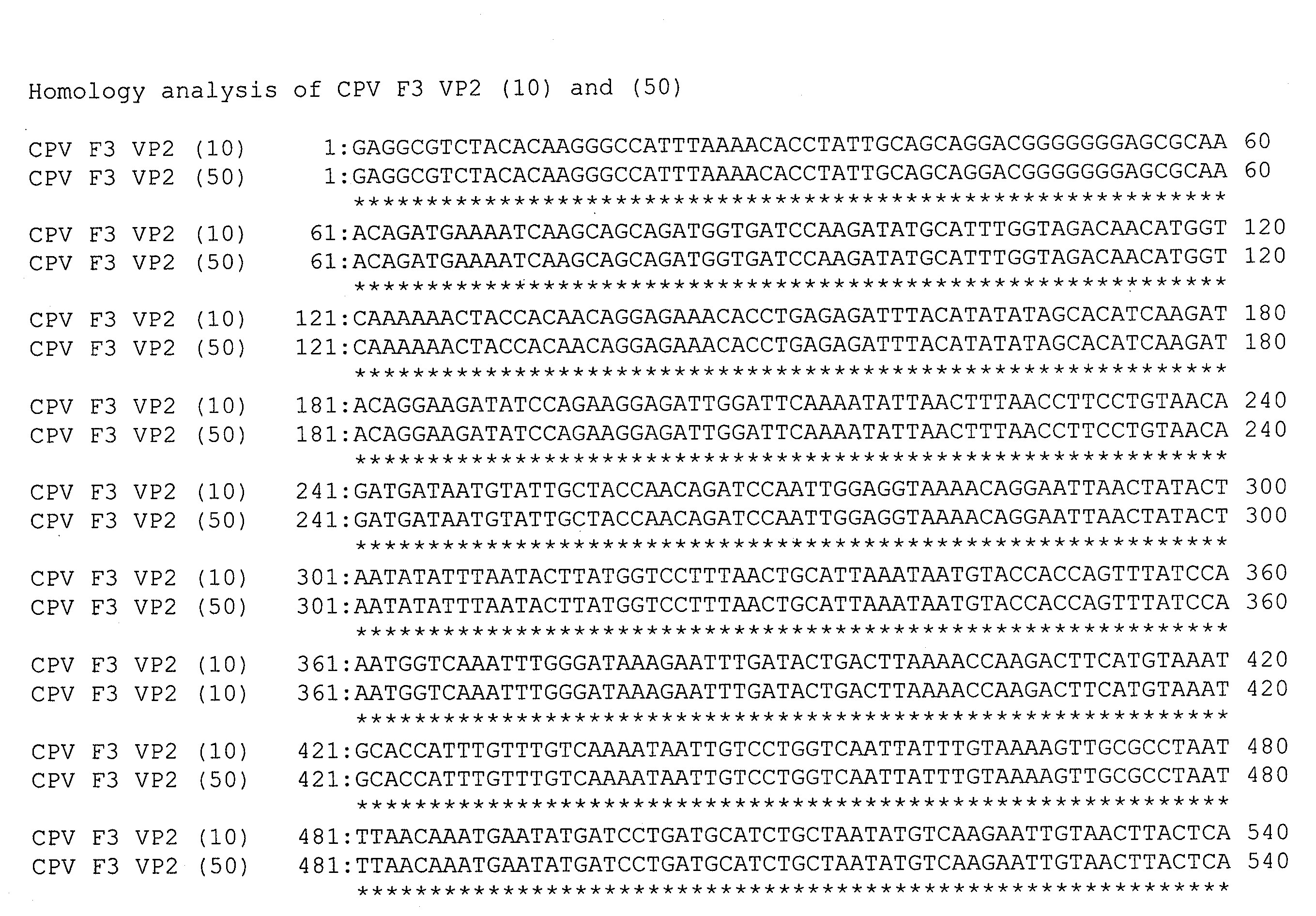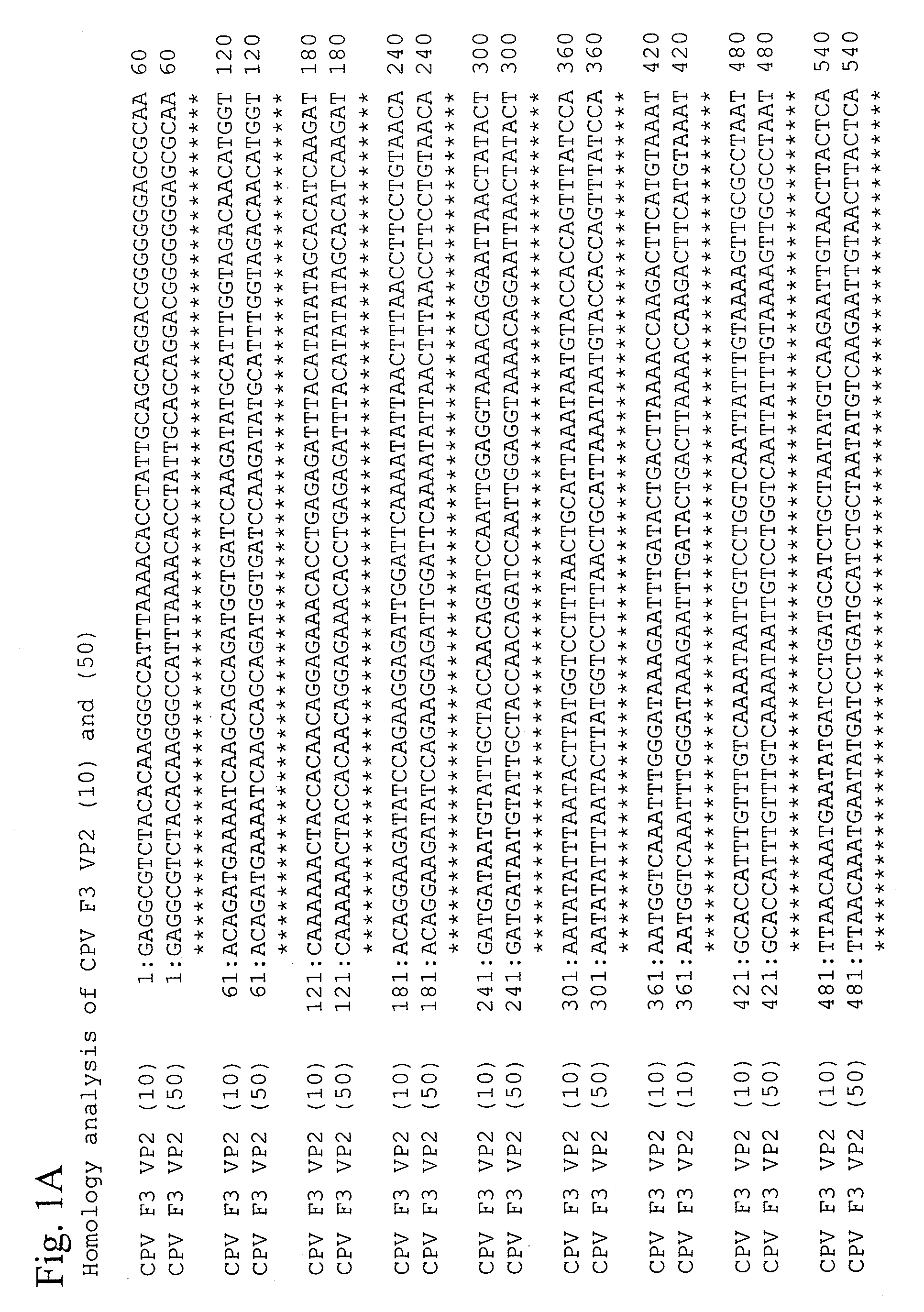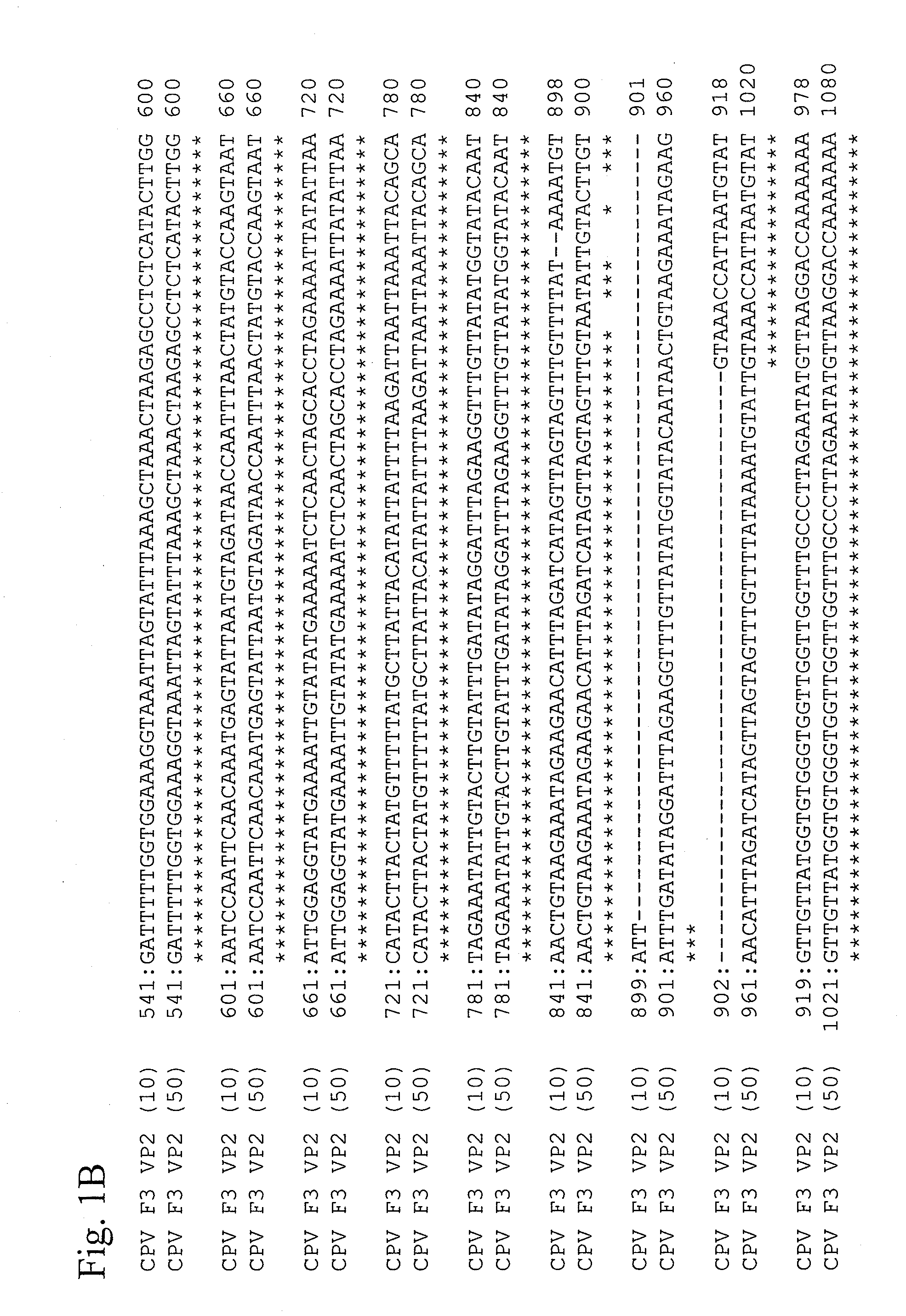Novel vaccine for dog
a vaccine and canine technology, applied in the field of canine infections, can solve the problems of puppy affliction with canine distemper virus infection, side effects such as allergic symptoms, and antibodies that would disadvantageously neutralize the vaccine, and achieve the effect of reducing time and cost and decreasing maternal antibody
- Summary
- Abstract
- Description
- Claims
- Application Information
AI Technical Summary
Benefits of technology
Problems solved by technology
Method used
Image
Examples
example 1
Attenuation of Virus
[0143]The parent virus strain was isolated in the following method.
[0144]The canine parvovirus F3 strain was isolated from stool of a mixed-breed dog obtained from the public health center of Kooriyama, Fukushima, in accordance with a conventional technique.
[0145]The canine adenovirus type 2 F1 strain was isolated from a throat smear or the like of an in-house-bred beagle dog raised in Nippon Zenyaku Kogyo Co., Ltd. in accordance with a conventional technique.
[0146]The canine distemper virus strain isolated by Nippon Zenyaku Kogyo Co., Ltd from a dog nasal specimen received when externally assigned to conducting the analysis.
[0147]Viruses were subcultured in the following manner.
[0148]In the case of canine distemper virus and canine adenovirus type 2 virus strains
[0149]1. Cells are subcultured.
[0150]2. Medium is removed upon formation of a monolayer.
[0151]3. A virus solution is innoculated
[0152]4. Incubation at 37° C. for 1 hour to allow attachment of the virus t...
example 2
Sequencing of a Particular Region of Virus Gene
Sequencing of Canine Distemper Virus (CDV) H and F Genes
[0160]A virus solution (2 to 3 ml) was innoculated onto Vero cells, which had grown into a full-sheet formation in a 10-cm petri dish for cell culture (Falcon). Virus attachment was allowed at 37° C. for 1 hour before 15 ml of growth medium was added, and culture was incubated at 37° C. for 3 to 4 days. When the cytopathic effects reached about 50% of the whole, total RNA was extracted from the virus-infected cells using a commercially available RNA extraction kit (TRIZOL reagent, Life Technologies Oriental., Inc.). Procedures were in accordance with the attached instructions. Specifically, medium was removed from the petri dish, 1 ml of TRIZOL reagent was added to the cells, cells were homogenized via pipetting, the resulting cell lysate was transferred to a 1.5-ml centrifugation tube, and the resultant was kept at room temperature for 5 minutes. Chloroform (0.2 ml) was added and ...
example 3
Efficacy Evaluation Consisting of Immunogenic Test and Protection Test and Safety Assessment Consisting of Pathogenic Reversion Test Regarding Vaccines Against Canine Distemper Virus
(1) Efficacy Evaluation
[0173]In order to investigate whether or not the canine distemper virus (CDV) 95-54 strains possess high immunogenicity via oral administration, the strains attenuated via subculture for 24 passages in Vero cells were administered to dogs, and production of neutralizing antibodies against CDV was compared.
[0174]Twelve roughly 3-month-old beagle dogs were divided into three groups: i.e., a group of 5 dogs subjected to oral administration, a group of 2 dogs subjected to subcutaneous injection, and a untreated group of 5 dogs in accordance with their sex and age in months. To the test dogs of the group subjected to oral administration, 2 ml of culture supernatants of 105.5 / ml CDV 95-54 strains were administered per dog twice orally and nasally (1 ml each) at intervals of 3 weeks. High...
PUM
| Property | Measurement | Unit |
|---|---|---|
| pH | aaaaa | aaaaa |
| temperature | aaaaa | aaaaa |
| volume | aaaaa | aaaaa |
Abstract
Description
Claims
Application Information
 Login to View More
Login to View More - R&D
- Intellectual Property
- Life Sciences
- Materials
- Tech Scout
- Unparalleled Data Quality
- Higher Quality Content
- 60% Fewer Hallucinations
Browse by: Latest US Patents, China's latest patents, Technical Efficacy Thesaurus, Application Domain, Technology Topic, Popular Technical Reports.
© 2025 PatSnap. All rights reserved.Legal|Privacy policy|Modern Slavery Act Transparency Statement|Sitemap|About US| Contact US: help@patsnap.com



